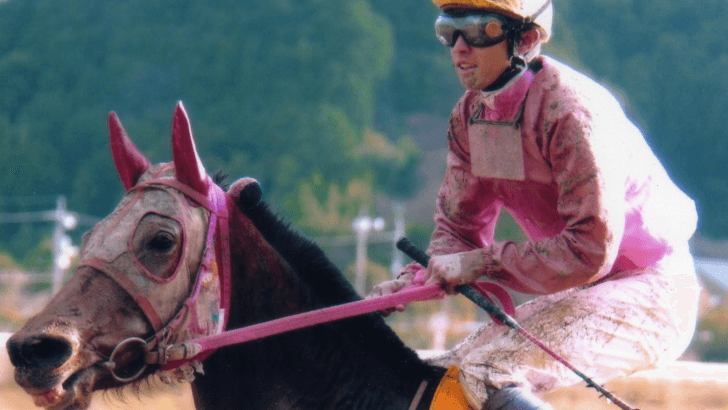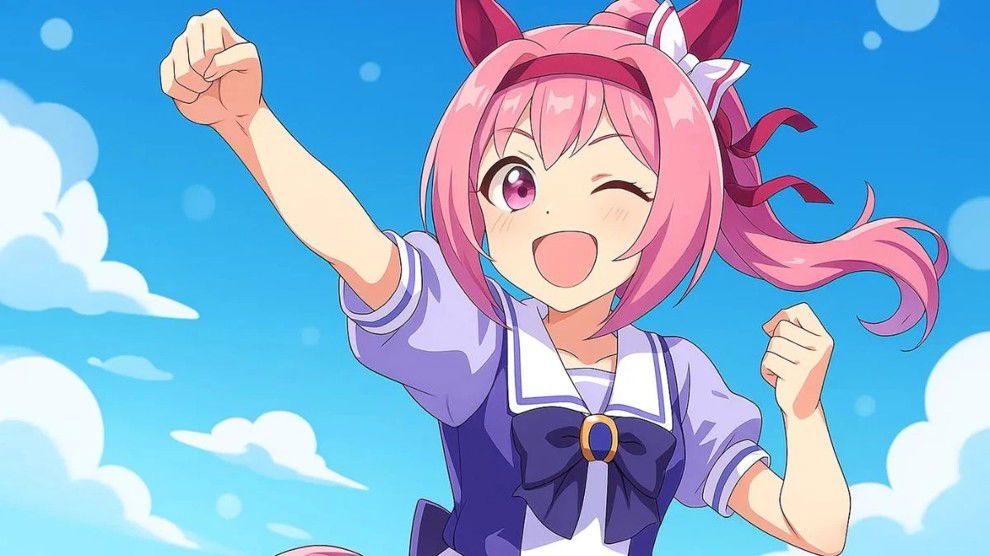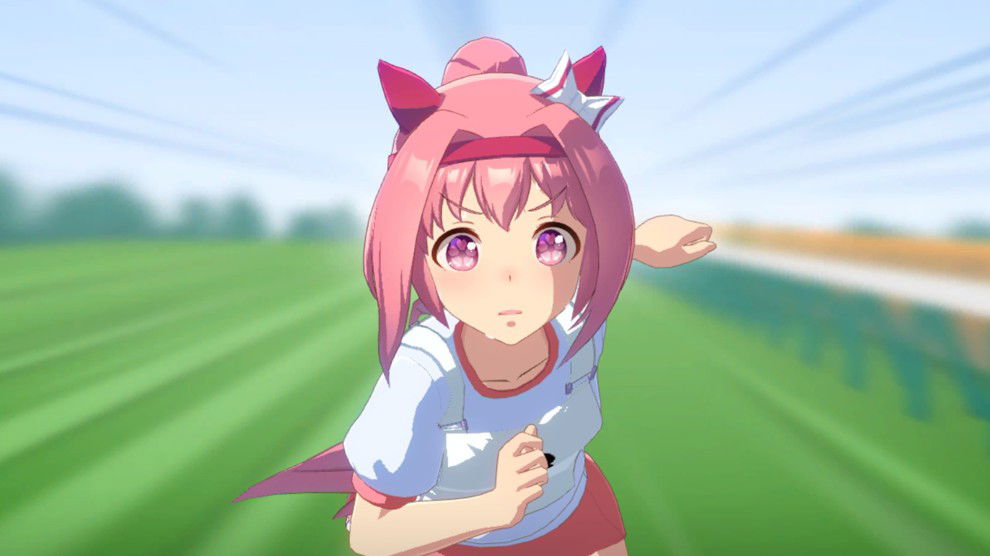Haru Urara became one of Umamusume: Pretty Derby's favorite characters, gaining even more prominence than Special Week, the protagonist of the first anime, who graces the cover of virtually all the game's promotional material. And this is all because, like her real-world counterpart, the mare Haru Urara, she became synonymous with perseverance and persistence.

Note: On September 8th, the real-lifeHaru passed away due to colic. She received a series of tributes from fans who visited her stable and left gifts.
Having participated in 113 races and not winning a single one, Haru won over fans by never giving up. And her in-game version is a lively and determined girl who faces adversity with a smile and never gives up. For her, winning or losing isn’t important; she enjoys racing, and that's what matters.
Because of this attitude, players now want her to win at any cost and are looking for a way to do so. However, her initial stats and abilities are too weak for long-distance grass races, such as the Arima Kinen (2,500m).
But with careful planning—the right inheritance, appropriate support cards, a focus on key stats, and abilities that truly work in the final moments of the race—it's possible to turn the tide. So, let's talk, point by point, about everything you need to do to try your perfect run with Haru Urara and if you have any questions, leave a comment.
Aptitude and Inheritance
Haru Urara's main obstacle is that she starts with very low skills in Turf and Long Distance—typically G/G—which, in races like the Arima Kinen, makes it virtually impossible to compete without improving them first. Aptitudes affect how much of her stat (Speed, Stamina) is converted into actual track performance; distance, in particular, impacts the final speed gain tied to the Speed stat and is not easily offset by skills.
Therefore, the inheritance mechanism—building parents and grandparents with "red factors" in the desired categories to earn red stars—is the standard path to increasing Turf and Long Distance aptitude. Sources indicate that the realistic goal is to push Haru's aptitudes to C or B in Long Distance (ideally A, when possible) and at least C in Turf.
The logic is simple: without sufficient aptitude, even high stats will suffer; with more favorable aptitude, Haru can turn training into real results on the track. To achieve this, players often build pedigrees with 9 or more red stars in each factor (Long/Turf), or prioritize 12/6 when distance is a priority—because distance often weighs more heavily than track type.
How to work with inheritance in practice
Planning inheritance means dedicating races and runs to creating parents and grandparents with the correct red factors. This usually takes several generations: you set up two or three breedings with characters that carry the stars in the Turf/Dirt and Long* factors. Remember that, for Turf aptitude purposes, Dirt factors count as Turf—useful information when specific Turf sources are scarce. Achieving 9 stars in each category is the minimum goal recommended by the community to have a good chance of raising aptitudes to C/B after inheritance events.
Warning: Even with a perfect pedigree, aptitude improvements depend on luck in event chances during training (there are two aptitude tests during the process, usually in April). Many runs are required; players report needing several attempts to achieve the desired combinations. This is an effort of repetition and patience, not a guaranteed result the first time.
Attribute priority
With your fitness level improved, it's time to focus on training the stats that really matter for 2,500m on grass. Focus on Speed, Stamina, and Power, in that order of practical importance for Arima Kinen with Haru. Guts and Wit help but are secondary. Suggested goals are:
• Speed around 800+
• Stamina 600+ (the higher, the better);
• Power around 800;
• Guts and Wit at useful levels, around 200–300 (depending on your support deck);
These values aren't hard and fast, but based on successful player runs, these values are the ones that increase her chances of winning.
Why these numbers? Over long distances, stamina is often the limiting factor: without sufficient stamina and recovery skills, Haru will burn out before the final sprint. Speed and Power are crucial for closing the distance and winning the final battle; Power also helps with uphill and acceleration sections. Therefore, adjusting most training to these three stats is the most straightforward path.

Race Strategy: Late Surge is recommended—with caveats. The Late Surge strategy for Haru in Arima Kinen preserves stamina in the early and middle stages of the race, allowing for a stronger final sprint, and aligns well with skills that activate in the final stages of the race—the critical turning point.
Acceleration skills are only useful if activated during the final acceleration window. The Arima Kinen has a well-defined Final Phase (in Nakayama, for 2,500 m, the final phase begins approximately in the last 833 m), so you want skills that trigger close to this window. Skills that activate too early lose value—they’re wasted. Planning timing and skill types is as important as having the skill itself.
Which skills to prioritize
Speaking of skills, there are two necessary skills: a good stamina recovery skill (gold-level preferably) and speed/acceleration skills that work at the end of the test.

For stamina recovery, the recommended skills are Swinging Maestro (Super Creek SSR), Iron Will (high potential), Indomitable (PL5 potential), and Breath of Fresh Air (Vodka SSR). Having at least one recovery skill at a high level drastically reduces the risk of running out of breath in the final stretch.
For the final sprint, choose skills that activate during the homestretch or that provide a speed/acceleration boost in the Final Phase. Homestretch Haste, Outer Swell, Slick Surge, and skills like "In Body and Mind" (Special Week SSR) are useful. Important: a skill is only valid when active—so prioritize skills with activation conditions that align with your Late Surge strategy and Haru's usual finishing position.
Composition of support cards (deck)
Practical deck recommendations point to a 3 Speed / 2 Power / 1 Stamina format—a combination that balances speed gains, acceleration, and recovery. Valuable SSR cards for this scenario are Super Creek (for its recovery/stamina kit), Kitasan Black (training boosts and useful skills for Speed/Power), and other high-quality SSR cards that increase Speed and Power gains. If you don't have any cards of your own, borrowing cards from friends is a common and viable strategy.
It's also worth remembering that certain cards allow rainbow training (training in which several stats increase further), friendship training, and race bonuses—building trams and reaching high levels in support cards early in the run is essential to maximize gains and unlockable skills.
Timing and execution in the match
During the race, monitor two key points: recovery activation (if the stamina skill works when needed) and acceleration skills in the final phase. If Haru gets too stuck in the pack or gets blocked, even the best build can fail due to race RNG—it's part of the game.

However, if you have decent aptitudes, stats within targets, and the right skills in your deck, your chances improve dramatically. Reports from successful players indicate that victories still require luck in events and activation, but the above combination makes victory plausible even without A/A in aptitudes.
Still, it won't be easy
Player reports make no secret of the fact that you'll likely need to complete several runs to achieve pedigree, appropriate support cards at high levels, and the synchronization of stats and skills. Players report an average of 5 to 10 runs, but some spend much longer until they find the perfect set. It's not uncommon for the first success to come after experimenting with deck variations and changing training priorities.
To put it bluntly: build a pedigree with plenty of red stars in Long Distance (priority) and Turf, focus on Speed, Stamina, and Power training, choose Late Surger as your main strategy, equip at least one high-level stamina recovery skill and acceleration skills that trigger in the Final Phase, and build a deck that predominantly focuses on Speed (3) plus Power (2) and Stamina (1). Use borrowed cards if necessary and be prepared to repeat runs until the RNG cooperates. These recommendations are consolidated in the analyses and guides consulted.
With all this, the dream of the Umamusume: Pretty Derby community's favorite horse is about to become a reality.











— Comments 0
, Reactions 1
Be the first to comment